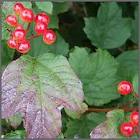Lentils were gathered by our prehistoric ancestors, and were one of the first cultivated crops along with wheat and barley. Their origins are a little obscure and there seems to be some debated as to whether they originated in the Mediterranean region or the Near East , in Syria Iraq Iran Turkey Israel
 Lentils are members of the Fabaceae or Leguminosea family of plants so are related to the chickpea, pea, green bean, borlotti bean, and others. Lentils come in a variety of colours, red, brown, green, black, white, yellow and orange, but all contain large amounts of protein and make useful meat substitutes. They also contain vitamins A, C, E, and K, lots of molybdenum, amino acids including choline, B-complex vitamins, B1 (thiamin) B2 (riboflavin), B3 (niacin), pantothenic acid and B6 (pyridoxine). They are rich in minerals, containing magnesium, manganese, copper, zinc, iron and calcium. They also contain Omega-3 and -6 fatty acids.
Lentils are members of the Fabaceae or Leguminosea family of plants so are related to the chickpea, pea, green bean, borlotti bean, and others. Lentils come in a variety of colours, red, brown, green, black, white, yellow and orange, but all contain large amounts of protein and make useful meat substitutes. They also contain vitamins A, C, E, and K, lots of molybdenum, amino acids including choline, B-complex vitamins, B1 (thiamin) B2 (riboflavin), B3 (niacin), pantothenic acid and B6 (pyridoxine). They are rich in minerals, containing magnesium, manganese, copper, zinc, iron and calcium. They also contain Omega-3 and -6 fatty acids. The ancient Greeks were cultivating them in 6000 BC although they were deemed the food of the poor, as they were by the Romans, who made soups with them. Hippocrates (circa 460 – 377BC) prescribed lentils for liver problems and to keep old men virile (who would have thought that lentils would have been aphrodisiacs?). Interestingly modern research has shown that choline helps to rid the liver of fats, so helping it function more efficiently to get rid of toxins in the bloodstream.
 Aristotle (c.384-328 BC) ate lentil soup flavoured with saffron, which seems a bit wasteful, but saffron was thought to be a substance that promoted happiness, and with lentils thought of as aphrodisiacs, perhaps Aristotle had other things on his mind.
Aristotle (c.384-328 BC) ate lentil soup flavoured with saffron, which seems a bit wasteful, but saffron was thought to be a substance that promoted happiness, and with lentils thought of as aphrodisiacs, perhaps Aristotle had other things on his mind. Modern Greeks still eat brown lentil soup (φακες) especially during Lent, although it has never been a favourite of mine even when it is drenched in olive oil. They make a good fava though, but this is made with yellow split peas not lentils.
 In the Indian subcontinent lentils are common and eaten with rice or as in spicy soups. They are sometimes also incorporated into kebabs to eke out the meat. I love red lentils, soups, daals, lentil loaf, whatever; they have a nutty taste and go well with mushrooms.
In the Indian subcontinent lentils are common and eaten with rice or as in spicy soups. They are sometimes also incorporated into kebabs to eke out the meat. I love red lentils, soups, daals, lentil loaf, whatever; they have a nutty taste and go well with mushrooms. Lentils help to lower cholesterol levels and are a heart-healthy food. They can help to stabilize blood sugar levels and normalize blood pressure. Because they are low in calories and high in dietary fibre and folate, they are wonderful for people on a weight-loss diet as they prevent constipation and have anti-inflammatory actions so are good for irritable bowel syndrome sufferers and for people with colon problems. The vitamins and minerals they contain have powerful antioxidant properties so they can combat the scavenging free radicals which can cause damage to healthy cells and cause cancer.
 If you allow them to sprout, they make very nutritious bean sprouts for salads and stir-fries and you can do this by soaking them in warm water for about 12 hours, then leaving them to sprout for 5 days.
If you allow them to sprout, they make very nutritious bean sprouts for salads and stir-fries and you can do this by soaking them in warm water for about 12 hours, then leaving them to sprout for 5 days. If you grind dried lentils the flour can be added to cereal flour to make a protein-enhanced bread, and if you make a paste of lentils and apply this to old ulcerous wounds, it will cleanse them and promote new skin growth.
TARKAY WALI DAAL
250 gr yellow lentils, soaked in water overnight
2 onions, sliced thinly
2 tomatoes, peeled and roughly chopped
4 green chillies, finely chopped
4 cloves garlic, finely chopped
1 inch ginger root, finely chopped
handful fresh coriander leaves
1 tbsp garam masala (See recipe)
1 tbsp cumin seeds
1 tbsp coriander seeds
1 tsp turmeric
salt to taste
4 tbsps oil
Method
Put the lentils in a pan with 4 glasses of water, salt, chilli powder, turmeric, coriander seeds, onions and tomatoes along with half of the chopped chillies. Cook on a low heat for about ½ hour or 45 mins until the lentils are soft.
Heat the oil in a frying pan and add the rest of the green chillies, garlic and ginger. Fry these until they change colour, then put them in the daal and stir well to mix.
Sprinkle with coriander leaves and serve with chapattis, naan or other breads.
This has Taste and is a Treat.




















































